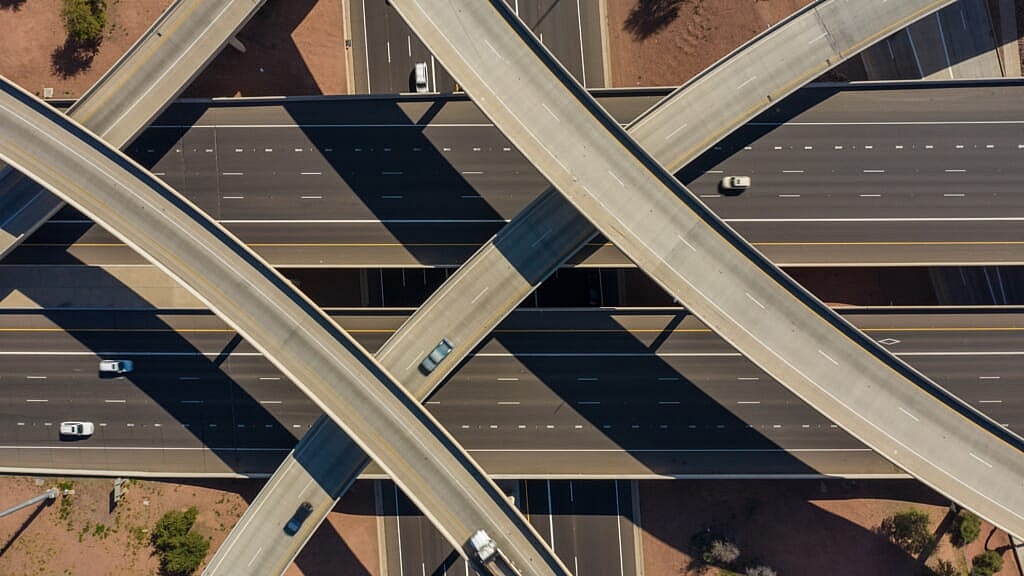As a kid growing up in the city of Syracuse, New York, I remember riding under the I-81 highway overpass every day on my way to school.
The overpass always had graffiti on it, usually a parting message from the graduating class of my high school. It was an urban legend that kids would sneak up on the gigantic grey concrete barriers as a senior prank to make their mark on the world.
“Go Bulldogs!”
“Class of 2002”
“Tay wuz here!”
That overpass was an invisible dividing line between the so-called “nice” side of town and our Southside neighborhood—one comprised of mostly Black families. While I’d spent part of my childhood in the Valley, freely circling the block on my green and black bike and running for the ice cream truck to grab rocket pops, once we moved into my grandmother’s house on the Southside, the rules suddenly changed. No more long walks. No visits to the corner store.
“You keep your bike right on this street!” my overprotective mom would warn me, as cars zoomed by on the highway just minutes away.

By contrast, the “nice” part of town was called The Hill, where Syracuse University basketball teams played in a spectacular white dome, freshly painted homes lined neatly-mowed streets, and moms and dads went for strolls in the sun (or more likely snow) with their dogs.
I honestly never thought much about the I-81 highway growing up nor did I know that it was purposefully built right through a once-thriving Black neighborhood called the 15th Ward, uprooting 1,300 residents, according to the New York Civil Liberties Union (NYCLU).
I didn’t know federal money provided to build the highway was supposed to be allotted to city revitalization. Instead, it became a runway for mostly white families to quickly get to much nicer suburbs, where redlining practices kept Black families from getting mortgages to do the same.
Like many kids, I just grew up thinking the dividing line was just how things were.
African Americans and Puerto Ricans populated the more blighted south and west sides of town, and while there were poor white people too, they were outnumbered by far. There was an unspoken belief just under the surface that blamed those residents in need for their circumstances.
There was no school orientation to familiarize us with racist public policy. No, ‘And now kids, if you look to your right, you’ll see the highway meant to cut you off from economic mobility and keep you in struggling schools!’
Two decades later, I finally learned the history I should’ve gotten in social studies. Now that the crumbling I-81 highway needs to be replaced, there is intense debate about what comes next at a time when President Joe Biden is promising to transform the nation’s infrastructure and “Build Back Better.”
When theGrio’s April Ryan asked Secretary of Transportation Pete Buttigieg last fall how he would deconstruct the racism built into America’s roadways, some people lost their minds. The suggestion that racism was so insidious that it snuck its way into infrastructure planning was apparently too much for folks to wrap their heads around.
But Ryan was only inquiring about what many Black people live and experience each day. There’s plenty of evidence that certain transportation policies did exactly what they were designed to do and still have a negative impact. Cities like Minneapolis, Minnesota Wilmington, Delaware, and Charlotte, North Carolina, all share eerily similar stories of once-thriving Black communities torn up as new roads were built right through them.
Looking back, I now see I was crossing under the overpass for high school because my designated neighborhood school had fewer AP classes and opportunities compared to the one near The Hill. I now understand why asthma rates in the Syracuse City School District are higher than New York State’s average asthma rates.
And now I understand why proposals for what to do after Syracuse removes I-81 must also include Black-owned contractors and businesses and not just lip service about community needs.
This week’s episode of my series “That’s The Point” looks at inequality in transportation and makes it clear that we have to ask more questions about our past to understand where to go next.
Hopefully, that future destination is one that divides us less and doesn’t require a trip under an overpass to get to something better.
Watch the latest episode of “That’s The Point” above and subscribe to the show’s playlist on YouTube!
Natasha S. Alford is VP of Programming and Senior Correspondent at theGrio. An award-winning journalist, filmmaker, and TV personality, Alford is writing her forthcoming book “American Negra.” Follow her on Twitter and Instagram at @natashasalford.
TheGrio is now on your TV via Apple TV, Amazon Fire, Roku, and Android TV. Also, please download theGrio mobile apps today!

